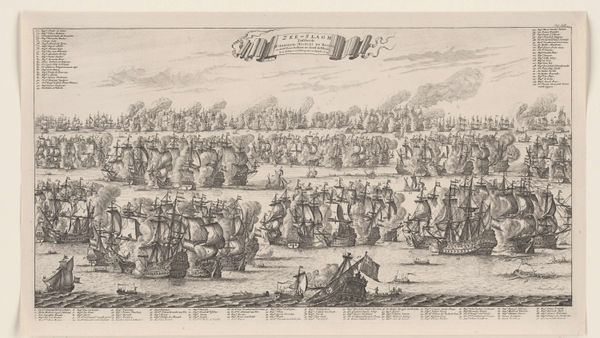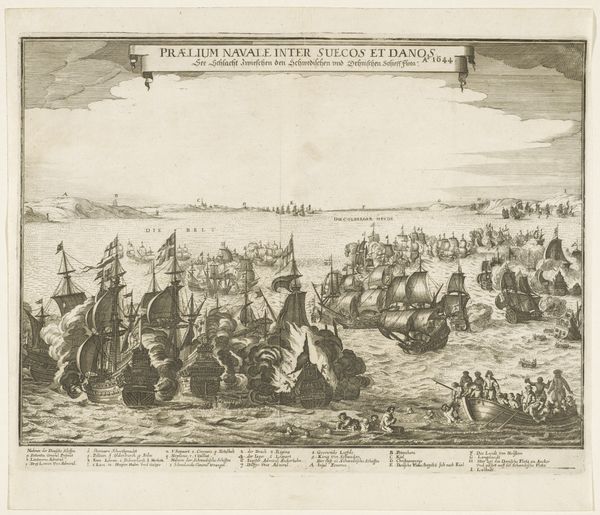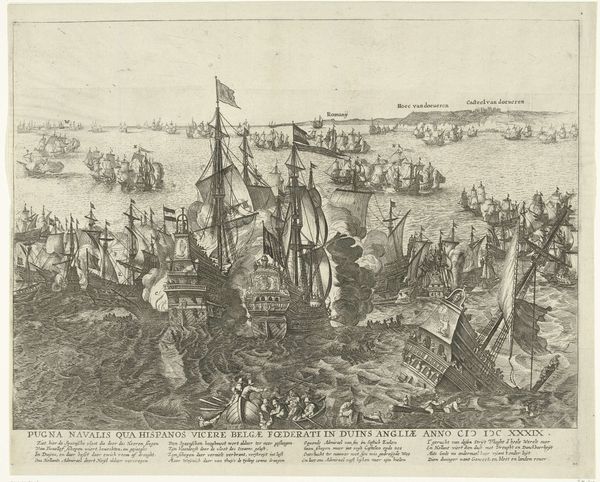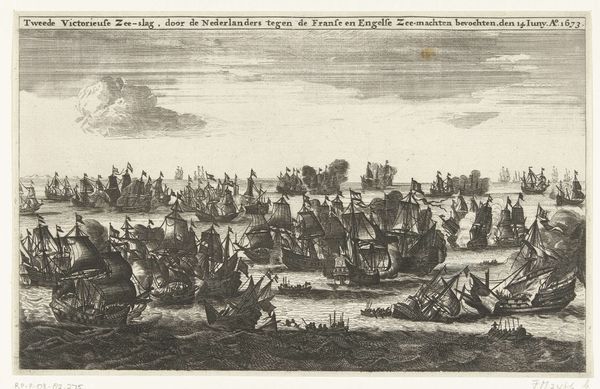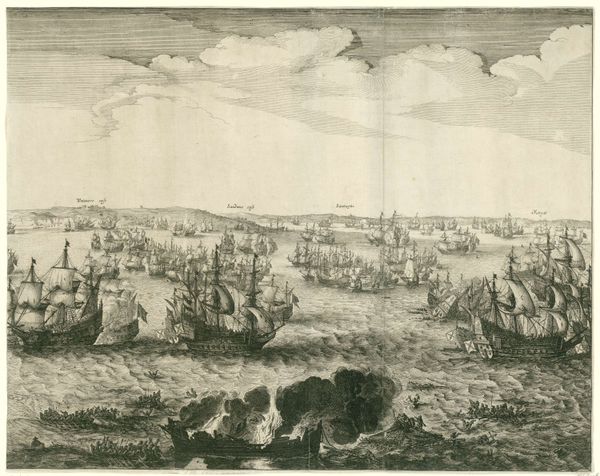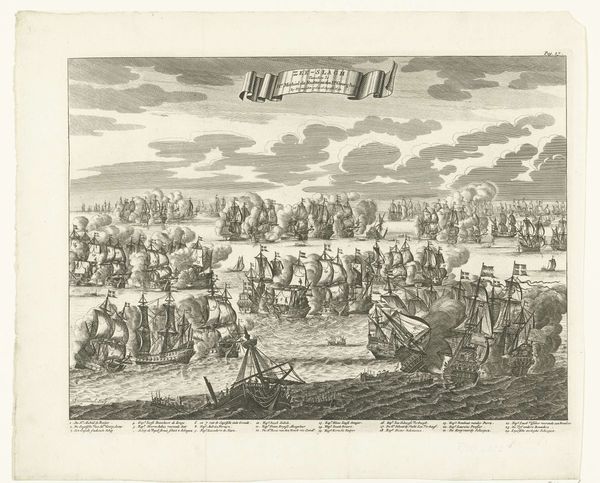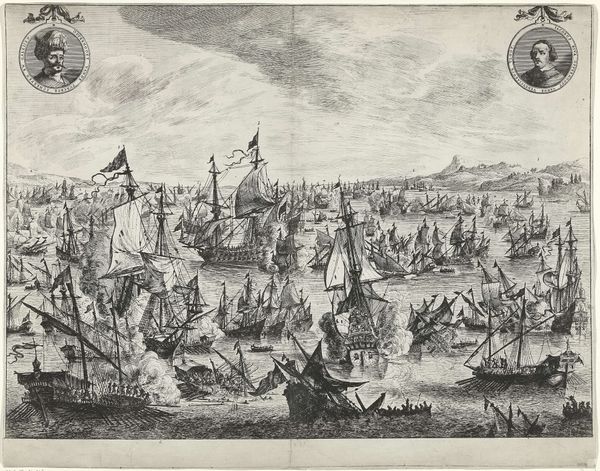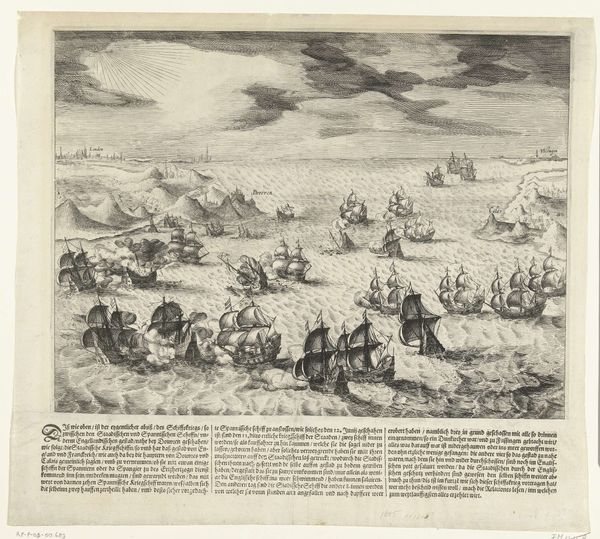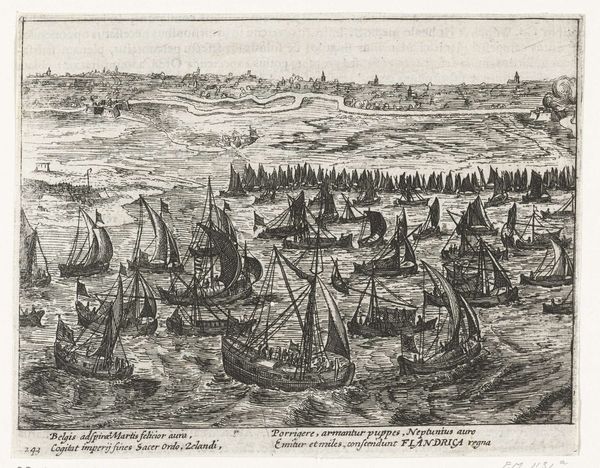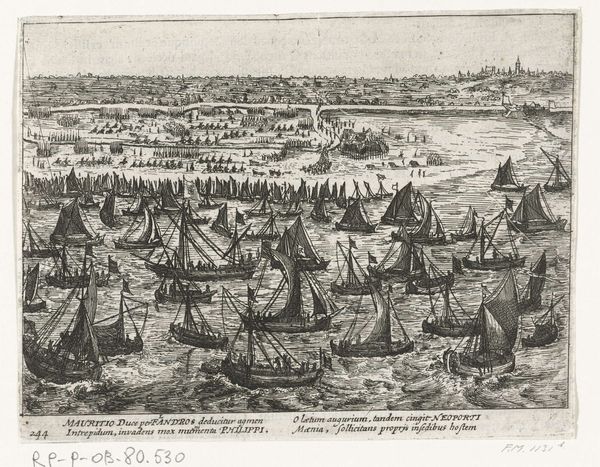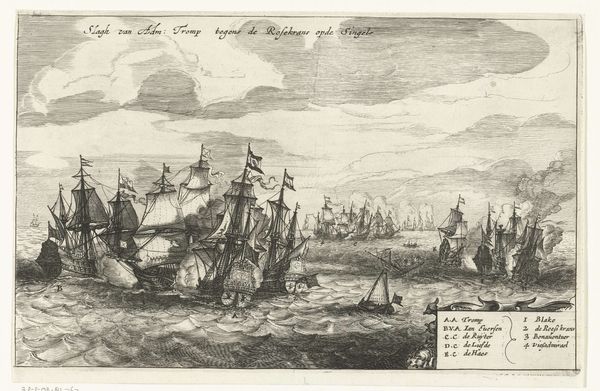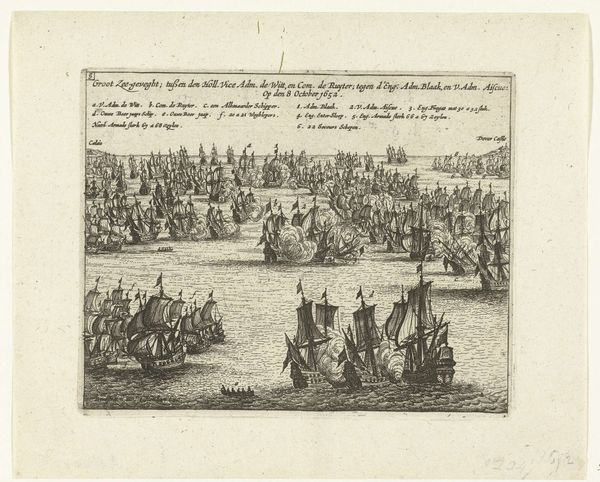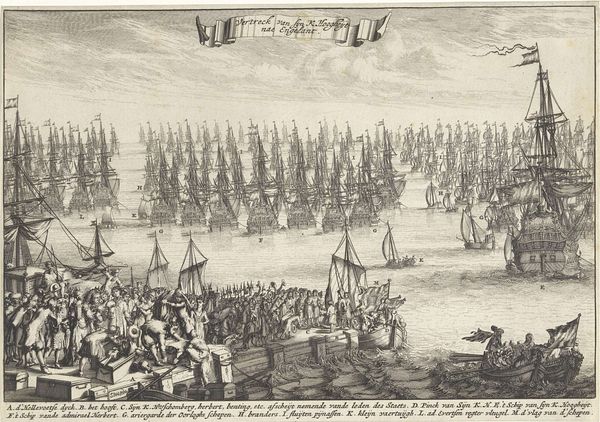
print, engraving
#
narrative-art
#
baroque
#
dutch-golden-age
# print
#
old engraving style
#
landscape
#
cityscape
#
engraving
Dimensions: height 183 mm, width 279 mm
Copyright: Rijks Museum: Open Domain
Curator: So, here we have “Zeeslag bij Livorno, 1653,” or "Naval Battle of Livorno, 1653," an engraving rendered between 1690 and 1692 by Bastiaen Stopendael, now residing at the Rijksmuseum. Editor: It's intensely dynamic! I can almost hear the cannons firing, feel the spray of the sea. The density of the ships creates a sense of claustrophobia, a feeling of being trapped in the chaos of battle. What story does it tell? Curator: This print captures a very specific historical event, the Battle of Livorno, a significant naval engagement during the First Anglo-Dutch War. Note how Stopendael uses precise lines and intricate details to convey the drama and complexity of the scene. Editor: Look at how the smoke from the cannons almost obscures the sky! There's this sense of ominous foreboding that pervades the scene. It is very well represented in shades and form. I can even see the Dutch flags bravely waving, though… they’re outnumbered? Curator: Indeed, flags serve as powerful symbols here, representing national identity and allegiance in this conflict. Remember that prints like these were a crucial form of visual media, shaping public opinion and celebrating naval victories. The composition strategically positions the Dutch fleet amidst the turmoil. The symbols speak of a battle that transcends mere conflict. Editor: That’s the paradox here, isn’t it? We see so much devastation and chaos, but the artistry is incredible. I’m struck by how enduring images of war have become ingrained in our visual language. Is that signature the engraver’s way of also recognizing their place within the violence they depicted? Curator: Stopendael was keenly aware of his role as a visual historian. Through techniques such as cross-hatching, and a sophisticated awareness of line weights, his engravings were both aesthetically appealing and informative, contributing to the cultural memory surrounding these events. It goes beyond a mere image of a battle. Editor: Right. I see that in every detail! Looking at it now, it seems less about glorifying war and more about preserving a crucial historical narrative for posterity. It certainly sparks an awareness and awe for past naval prowess and conflicts. Curator: A sentiment that perhaps explains this engraving’s enduring relevance, doesn’t it? Editor: I think so too, thank you.
Comments
No comments
Be the first to comment and join the conversation on the ultimate creative platform.
